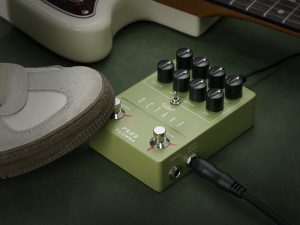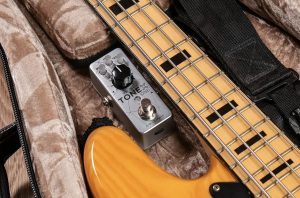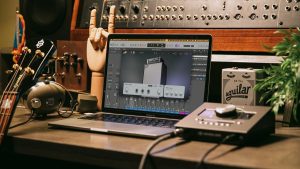Embracing Chaos, Discovering Beauty
The Rainbow Machine is a polyphonic pitch-shifting modulation pedal created by EarthQuaker Devices, a company known for its bold, character-rich stompboxes. Designed by EQD founder Jamie Stillman, this pedal wasn’t built to emulate traditional effects or replicate natural sounds — it was created as an exploration of what pitch, delay, and feedback could become when intentionally bent, stretched, and warped.
Released initially in 2011 and later revised in the Rainbow Machine V2, it quickly earned a reputation as a “noise-maker’s dream” and a chaos pedal. But here’s the twist: beneath the strange lies surprising musicality — and when approached with patience and intent, the Rainbow Machine reveals itself as an expressive, sometimes subtle tool, particularly on bass.
Why It’s (Surprisingly) Useful for Bass Players
While the Rainbow Machine might not be the first pedal that comes to mind for bassists, its lush detuning, shimmering pitch shifts, and dynamic chorus-like movement can add width, movement, and expressive layers to otherwise standard lines.
It shines when:
- Used sparingly to add shimmer or dissonance under a bass melody.
- Set for subtle intervals to create modulated harmony.
- Employed as an ambience tool in post-rock, experimental funk, psych, or lo-fi.
- Activated during breakdowns or ambient interludes.
In short, it’s not just a “weird pedal” — it’s a textural tool that can range from subtle to surreal.
Core Concept: Controlled Unpredictability
At its heart, the Rainbow Machine is a pitch-shifter, but not in the clean, sterile sense. It’s grainy, digitally unstable, and proud of it. What makes it different is its approach to pitch: it allows for real-time, continuously modulated pitch shifts, alongside regenerating feedback loops and even self-oscillation.
It’s not about precise harmony — it’s about expressive pitch movement, similar to tape warble, circuit-bent toys, or detuned tape echo. For those open to exploration, this pedal becomes less of an effect and more of an instrument.
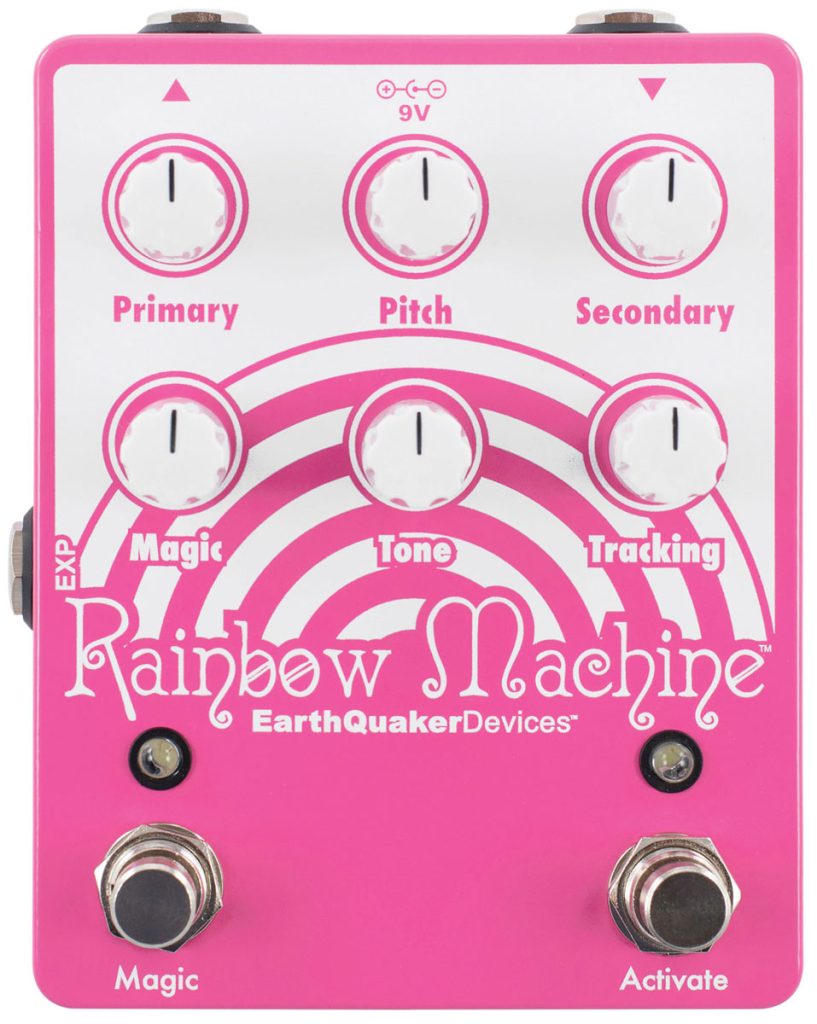
Controls: A Study in Interaction
Each knob has a wide range and interacts with the others. Here’s a breakdown:
Pitch
- Controls the interval of the shifted signal.
- Centered = unity; up = higher intervals (up to a 5th), down = lower intervals (down to a 4th or 5th below).
- Sounds metallic and strange, but can also produce rich, chorused or organ-like tones at subtle settings.
Primary
- Mixes the pitch-shifted signal into the output.
- Lower settings = dry-heavy signal; higher = wet-dominant.
- Set just right, it creates a dual-voice harmony with a bass line that sounds both synthetic and analog at once.
Secondary
- Adds a second pitch-shifted voice, offset from the primary.
- This is where the lushness happens — subtle use adds motion and stereo-like depth; maxing it out invites chaos.
Tracking
- Controls the lag and response time of the pitch shifting.
- Lower = glitchy, stuttery response.
- Higher = smoother, more stable pitch tracking.
- On bass, lower settings bring robotic and broken-machine tones; higher settings give you cleaner harmonies and shimmers.
Magic
- The signature feature. It routes a portion of the wet signal back into the pitch shifter and creates regenerative feedback, rising/falling harmonics, and sometimes full-on self-oscillation.
- Low = subtle trails and blooming overtones.
- High = madness.
- When used wisely, this adds organic decay and “after-breath” to notes, especially for ambient swells.
Tone (on V2 only)
- High-pass filter to shape the brightness of the effect.
- On bass, this is especially helpful to preserve low-end clarity while still allowing the effect to sit above the dry tone.
Activate / Magic Footswitches
- Activate turns the pedal on/off.
- Magic engages the feedback circuit, momentarily or latched — turning the pedal into a reactive soundscape generator.
Using the Rainbow Machine Musically (Not Just for Noise)
While the pedal is capable of alien spaceship sounds, with careful settings it offers surprisingly usable tones:
1. Subtle Modulated Harmony
- Pitch just a few cents up/down, Secondary at 9–10 o’clock.
- Result: A lush, detuned chorus that adds width and shimmer without sounding digital.
- Great for: Neo-soul, ambient, lo-fi bass lines.
2. Faux Double-Tracking
- Pitch set close to center, Tracking high, Primary and Secondary around noon.
- Adds a subtle doubling effect with shifting dynamics.
- Works well in a mix to give depth to mono bass tracks.
3. Organ-like Textures
- Primary pitch at a 5th, Secondary up an octave, both blended moderately.
- Produces synthy, harmonized swells with dramatic flair.
- Pair with reverb/delay for cinematic results.
4. Textural Swells
- Use an expression pedal for real-time control of Primary pitch.
- Add delay and reverb post-Rainbow Machine.
- Result: Swelling, pitch-shifting pads that blend beautifully in spacious arrangements.
5. Chaos as a Crescendo
- Crank Magic with Tracking low, then activate it mid-note.
- Sends signal into spiraling pitch trails — excellent for transitions, breakdowns, or outro climaxes.
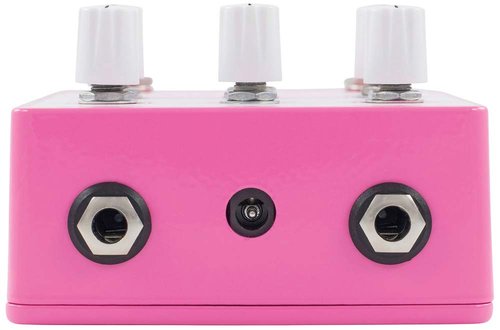
Where It Sits in a Signal Chain
For bass, place it:
- After dynamics and drive, to keep pitch tracking stable.
- Before delay/reverb, to shape trails and create evolving textures.
- Optionally in a parallel loop, to blend its sound in/out while retaining fundamental bass tone.
Build Quality & Power
- Hand-built in Akron, Ohio.
- True bypass switching.
- Requires isolated 9V power (no daisy-chaining due to digital noise).
- Robust enclosure with bold artwork — unmistakably EarthQuaker.
Pros and Cons
Pros:
- Wild, expressive, and unpredictable — but also subtly beautiful
- Two pitch voices with real-time modulation
- Magic feedback circuit unlocks reactive dynamics and feedback trails
- Capable of unique textures and ambient richness
- Playable and musical when dialed in carefully
Cons:
- Not for players seeking conventional or transparent effects
- Can overwhelm bass fundamentals if misused
- Needs isolation in power chain to avoid digital noise
- Can be intimidating without experimentation
Conclusion: Order in Chaos
The Rainbow Machine is a pedal that defies category. It’s not a pitch shifter, a chorus, or a synth — it’s all of those things and none of them, depending on how you use it. For bass players, it offers an unconventional but highly expressive voice: one that can shimmer behind a groove, detune a melody into dreamy dimensions, or explode into tonal hysteria with the stomp of a switch.
At its core, the Rainbow Machine is about embracing unpredictability, but with the tools to shape and control it just enough. When balanced correctly, it becomes not a noise generator, but a compositional tool — offering the player a palette of instability, beauty, and tension.
It teaches the user to play differently, to listen carefully, and to accept the unexpected. That’s why it continues to inspire, challenge, and reward those bold enough to explore its strange sonic universe.


